Do you want to make your yoga journey even better and practice higher than ever? Think of your mat as a special spot where you can connect with your inner strength, let go of your fears, and find a new you with the help of a skilled and loving teacher. You are welcome to go on an adventure through partner yoga here. This is a space where you can make each pose more sacred by connecting with each other and supporting each other.
Today, we're going to talk about the unique area of hard yoga poses for two people that are only meant to be done by couples. This is an interesting mix of physical endurance and mental effect shown through topsy-turvy balances and heart-pounding inversions. Hard yoga poses for two people
What Are Hard Yoga Poses for Two People?
Asanas for two people, also called partner yoga or acro yoga, require partners to work together, stay balanced, and trust each other. Because these poses require both bodies to work together, they are harder than regular yoga poses done by one person. These poses are hard because you need to be able to communicate well, help each other out, and know what each partner’s skills and weaknesses are.
Yoga moves that are hard for two people Challenge your mental attention, physical strength, and flexibility. A lot of the time, they include things like pulling, balancing, and counterbalancing that work more than one muscle group at the same time. These poses will not only help you get better at yoga, but they will also make your relationship stronger.
Table of Contents
Benefits of Partner Yoga
Yoga with a partner is more than just individual practice; it nurtures the spirit of unity and cooperation between partners. When you synchronize your movements with breath, you can have these advantages.
1. Hard yoga poses for two people Enhance Connection:
Partner yoga helps us connect with each other more deeply. It promotes kindness, love, and trust between people, which helps everyone. This leads to the union of smooth movement, the inhale, and the exhale, which is a metaphor for the unity of forces and the feeling of being one.
2. partner yoga Increase Flexibility:
When doing yoga with a person, you can do more advanced stretches and poses that focus on stretching and extending your body. This makes you more flexible and increases your range of motion. When couples hit new levels of flexibility, they help each other out, which gives them more room to move around freely.
3. partner yoga Improves Communication:
It is very important for people doing partner yoga to be able to talk to each other clearly and openly about their needs, goals, and any meant or implied boundaries or domains. Partners can talk to each other, use body language, and use intuitive understanding to communicate successfully. These skills help them not only on the mat, but also in real life.
4. hard partner poses Heighten Awareness:
Partner yoga brings about a deep sense of focus that affects both the person doing the yoga and their partner. Then, a person can sync their breath, moves, and energy with that of the teacher or class. This gives them a deep sense of being in the present and aware moment.
Explore more partner yoga poses and Learn more about the exciting world of difficult yoga poses for partners. Let’s go beyond our limits, make our bond stronger, and look forward to the trip ahead.

Strengthening Bonds Through Shared Practice
It’s impossible to avoid doing hard poses with other people that depend on trust, conversation, and mutual support. Doing things together and working toward the same goals will strengthen your emotional bond and help you create unforgettable events that are likely some of your most valuable memories.
Preparing for Hard Yoga Poses
Before attempting challenging poses, it’s essential to prepare your bodies and minds for the journey ahead. Consider the following steps
Warming Up Together
Establishing Clear Communication
The communication between two people in partner yoga is of paramount importance. Let the other person know what you are up to, the things you like, any physical limitations that you might have so that you two can make a safe and fun choice.
Role of partners in acro yoga
As a partner, you play two main roles: the base and the flyer.
In order to support some or all of the flyer’s weight, the base is someone who is always touching the ground. That person must be pretty strong, mostly in their core, to do this job.
So, the practitioner who is pretty much separate from the ground is called the flyer. Most of the time, the flyer does the more difficult one, while the base keeps the flyer in the air.
A lot of people forget about the third part in acro yoga. For the same reason, you need a spotter even if you do moves that are meant for two people. It could be a friend or a yoga teacher!
Hard Yoga Poses for Two People
Now, let’s explore some exhilarating hard yoga poses that you and your partner can master together.
1. Dolphin Plank Pose: A Test of Balance and Strength
One partner lies face down, and the other lies on their back with their legs crossed and their hands behind their partner’s shoulders to support them. You can use this pose to test your core strength, balance, and agility.
Instructions
- Start off with a plank position of your forearms straight under your shoulders.
- Your partner should cautiously get on your back placing his/her feet on your shoulders.
- Contract your abdominal muscles and keep the form; it should be a straight line from your head to your heels.
- Continue to the other side and hold the pose for several breaths while the partner switch roles.
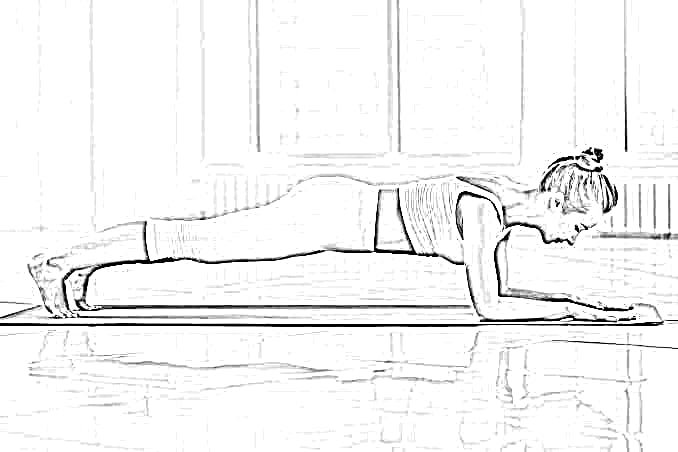
Reasons Why dolphin plank Pose is Considered Hard
This type of yoga is hard because the person supporting the weight has to stay balanced and stable while the other person is on their back. Because they work their core, arms, and balance all at the same time, it’s a great way to see how strong each partner is. Keeping your balance and moving at the same time can also be hard, so this is a difficult pose that needs a lot of practice.
2. Double Downward Dog: Enhancing Flexibility and Alignment
This is an adaptation that is similar to the Original Dog pose and both partners will be facing each other while they are in the pose. Whether is a position of standing, lying, or kneeling it offers deep stretch of the hamstrings, calves or shoulders while improving the alignment and the posture.
Start in a traditional Downward Dog position, facing your partner.
- Gradually walk your hands and feet towards each other until you’re in close proximity.
- Maintain a slight bend in your knees and focus on lengthening your spine.
- Hold the pose for 5-10 breaths, then release.
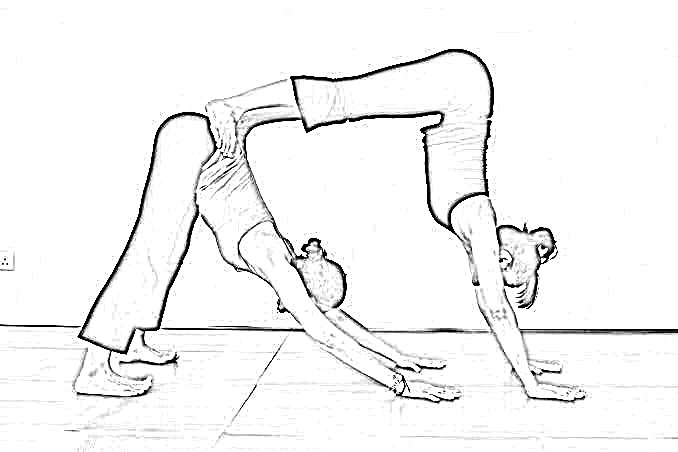
Reasons Why double downward dog Pose is Considered Hard
This form of Downward Dog is hard because you have to be very flexible, and it’s even harder for both of you. The hamstrings, calves, and hips get deeply stretched when you face each other and try to keep your balance. It’s also important for the joints to be balanced so that moves are coordinated and the body stays in the right place, which makes this pose hard for most people.
3. Partner Boat Pose: Strengthening Core Muscles
In Seated Partner Boat Pose both partners rely on the muscle strength to stay in balance while maintaining their core stability. It encourages coordination, team work and abdominals.
- Stand facing each other with your feet hip-width apart.
- The folding partner bends forward at the hips, reaching towards the ground.
- The standing partner gently supports the folding partner’s back, providing stability and assistance.
- Hold the pose for several breaths, then switch roles

Reasons Why Partner Boat Pose is Considered Hard
partner Boat Pose is an advanced asana because the two people have to sit on each other’s thighs and use their core muscles to keep their bodies stable. If you’re proud of your V shape, it means you have strong abs and your partners can work together very well. To do this pose correctly, you need to be strong, have good balance, and be able to stay connected with your team.
4. AcroYoga Shoulder Stand: Cultivating Trust and Support
Here we enter an advanced AcroYoga pose, where the partner suspended in a shoulderstand position is encouraged to be trusting and communicate. Those involve strength, balance and working together.
- The base partner lies on their back with their arms extended overhead.
- The flyer partner carefully places their feet on the base partner’s hands and leans forward, extending their legs towards the sky.
- The base partner supports the flyer’s hips and legs, creating a stable platform.
- Hold the pose for as long as comfortable, then gently release.
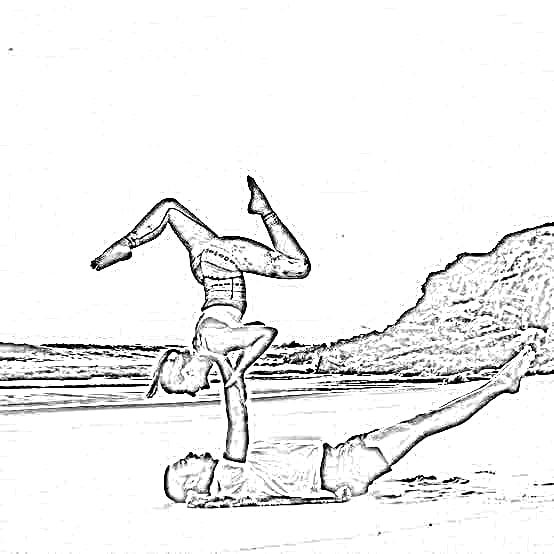
Reasons Why AcroYoga Shoulder Stand Pose is Considered Hard
In contrast to the beginner poses, this one is pretty tough because the person who is standing has to hold the person who is in shoulder stand position while they stand. The person on the base should be strong and stable enough to safely hold the flyer, and the person on the flyer must trust and believe that their partner will support them. People love it because it is one of the hardest poses in partner yoga because it takes strength, balance, and group control.
5. Partner Forward Fold: Deepening the Stretch
This pose offers a gentler variation of the folding forward position, with one partner standing upright and the other one bending forward, allowing a soft stretch of the hamstrings and lower back. It helps in relaxation, keeping body flexible, and emotional bonding.
- Stand facing each other with your feet hip-width apart.
- The folding partner bends forward at the hips, reaching towards the ground.
- The standing partner gently supports the folding partner’s back, providing stability and assistance.
- Hold the pose for several breaths, then switch roles.
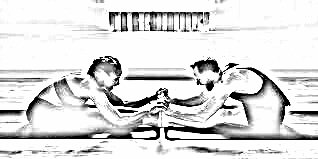
Reasons Why partner forward fold Pose is Considered Hard
Partner Forward Fold can be hard for partners because they have to be able to express themselves correctly and time their moves to get a deep muscle stretch. The partners must be able to work together and coordinate in a way that lets the partner who is folding know that the partner is behind them, and the partner who is standing should feel just as safe in their balance and control. Sometimes it’s hard to keep your alignment and balance while stretching very deeply. This is especially true for people who are new to stretching routines or have never done them before.
Safety Tips and Cautions
While partner yoga can be incredibly rewarding, it’s important to prioritize safety and listen to your body’s cues. Consider the following tips:
Listening to Your Body’s Limits
Pay attention to any pain or discomfort you feel during poses and be honest with your partner about it. Don’t push yourself too far, and pay attention to what your body needs.
Using Props for Added Support
Utilize yoga blocks, straps, or bolsters to modify poses and provide additional support as needed. Never hesitate to try with different props to enhance your practice.
Some Bonus hard yoga poses for two people
Here are some additional hard yoga poses for two people that you can include as a bonus:
Flying High Pose (Partner Bird of Paradise):
A partner still working on a standing split supports the other with his legs extended into a fly. This pose creates a beautiful dance and is also challenging.
Double Pigeon Pose:
This pose has partners seating back to back on the mat with the stacking of the legs in double pigeon position being the core of this pose that asks for both partners to be strong and flexible.
Partner Camel Pose;
In partnered Camel Pose, one individual knelt and the other partner, at the back in a camel pose, supports the kneeling partner as they reached back and flexed to encourage less only a mental but a physical connection.
AcroYoga Throne Pose:
It further help to the founder who sits in a chair on the feet of the partner, who stands on one foot to keep the balance. It demands for endurance, stability, body level, and perfection of form.
Double Tree Pose:
Double Tree Pose is the example of partner pose where intertwined arms of a pair of people take a standing position with one foot of each leg placed inside the respective thigh of the other leg, thus creating joint balance and stability.
Poses that are coupled as bonuses will add the kind of excitement and depth to partner yoga practice that is experienced when you know that someone got your back no matter what. Now is the time to come along and grapple with those new activities together.
Conclusion
Last but not least, doing hard yoga poses with a partner isn’t just a physical challenge; it’s also a chance to grow, connect, and trust each other. Partner activities like Dolphin Plank Pose, Double Downward Dog, Partner Boat Pose, AcroYoga Shoulder Stand, and Partner Forward Fold can help couples get along better, become more flexible, and learn more about each other.
In partner yoga, there is a special space for two people to start exploring their inner selves and helping each other.When two people do tough poses together, they can improve their communication, trust, and teamwork, which can help them in and out of the mat.
Safety should always come first in partner yoga. Pay attention to what your body is telling you and talk to your partner clearly.Whether you’re doing two-on-one hard yoga poses to get in shape, get closer emotionally, or just have fun with your partner, the experience is satisfying and fulfilling.
So, get your yoga mat ready, ask your partner to come along, and start practicing dual person hard yoga poses. This will help you grow as a person, learn new things, and communicate better.
FAQ
Most frequent questions and answers
While some poses may be challenging for beginners, partners can modify poses to suit their skill level and gradually progress as they build strength and flexibility together.
You can practice partner yoga with a friend, family member, or romantic partner. Many yoga studios also offer partner yoga classes where you can meet like-minded individuals.
It’s essential to consult with a healthcare professional before attempting partner yoga if you have any physical limitations or injuries. You can modify poses or choose alternative poses that are safe and comfortable for your body.
Wear comfortable, stretchy clothing that allows for ease of movement. Avoid clothing with zippers, buttons, or anything that could cause discomfort during poses.


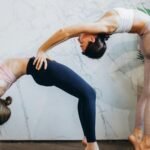





Average Rating